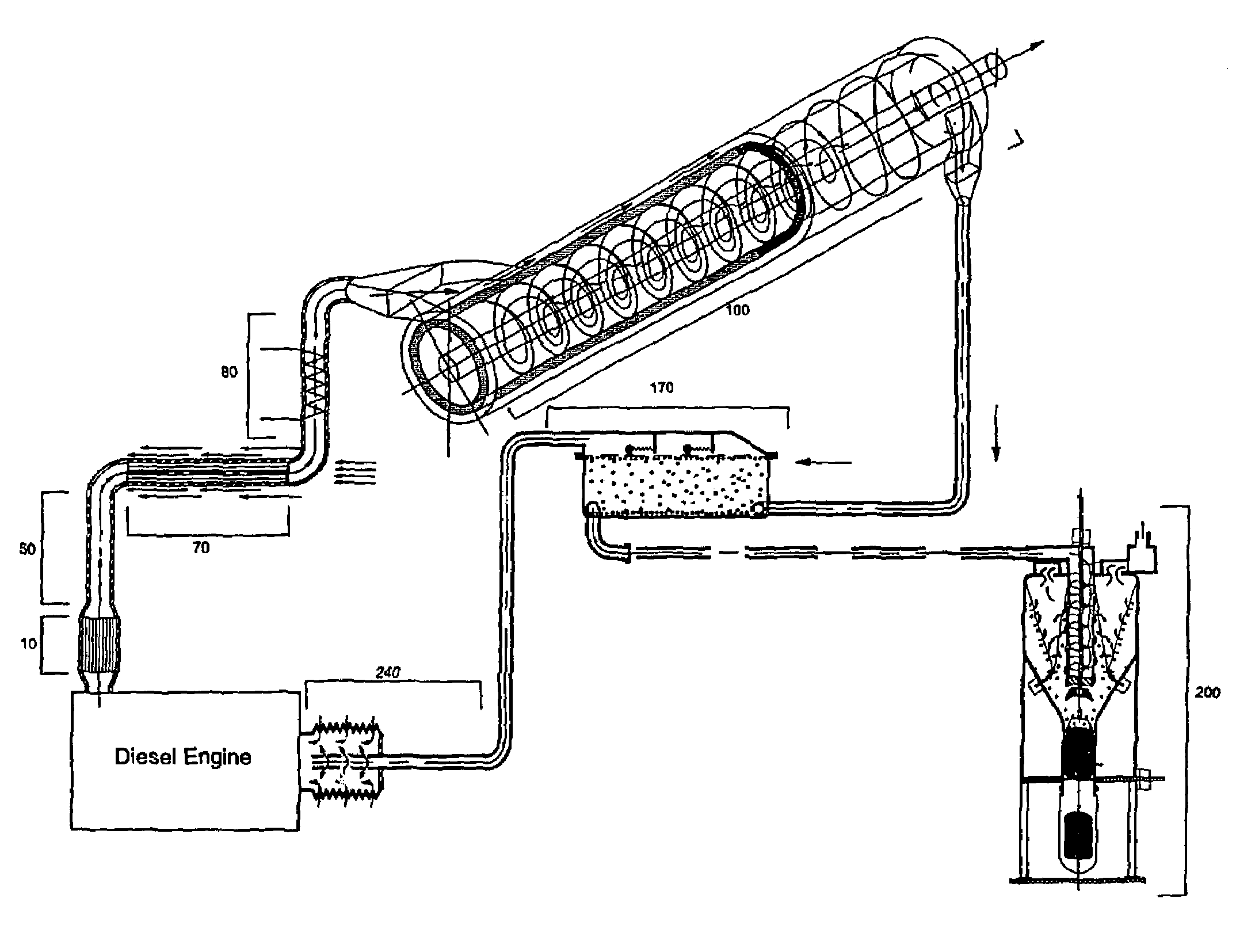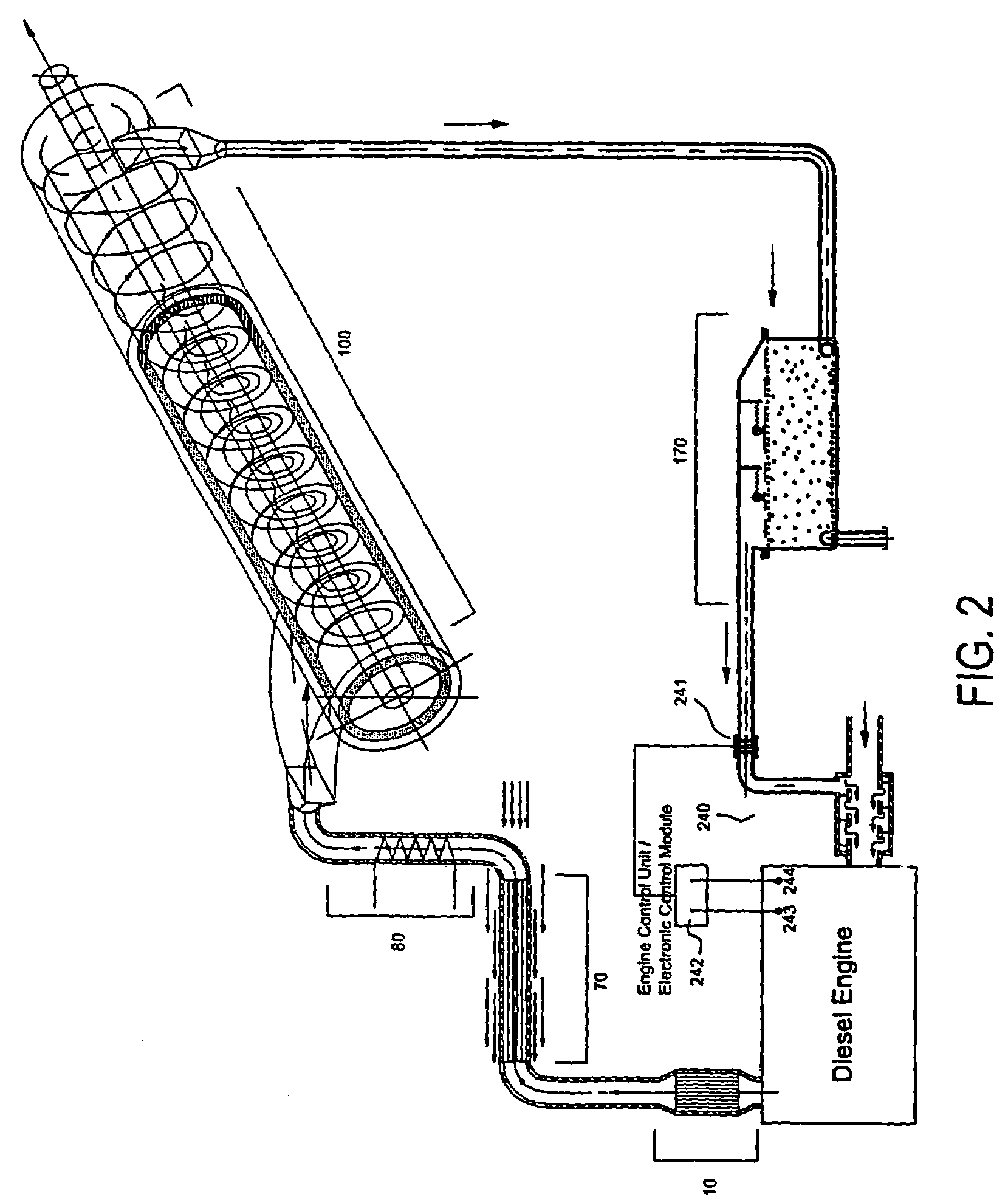Exhaust after-treatment system for the reduction of pollutants from diesel engine exhaust and related method
a technology of exhaust aftertreatment and diesel engine, which is applied in the field of exhaust aftertreatment system for the reduction of pollutants from diesel engine exhaust, can solve the problems of large size of exhaust, achieve the effects of eliminating sudden temperature rise and hot spots, high reliability and durability, and easy separation
- Summary
- Abstract
- Description
- Claims
- Application Information
AI Technical Summary
Benefits of technology
Problems solved by technology
Method used
Image
Examples
Embodiment Construction
[0067]The following description of the embodiment(s) is merely exemplary in nature and is in no way intended to limit the invention, its application, or uses.
[0068]A. Brief System Description
[0069]Referring initially to FIG. 1 of the drawings, wherein reference numerals designate identical or corresponding parts throughout the several views, an after-treatment system for the reduction of pollutants from engine exhaust is illustrated. The system shown in FIG. 1 can be utilized for the after-treatment of exhaust gases from a variety of internal combustion engines operating at lean conditions and having appreciable amounts of particulate matter such as diesel engines, compressed and liquid natural gas engines. The system of the present invention can be designed to collectively destroy / separate / remove all pollutants from the exhaust gases. This includes: particulate matter and nano-size particles, volatile organic compounds, nitrogen oxide, hydrocarbon, carbon monoxide as well as sulfur...
PUM
| Property | Measurement | Unit |
|---|---|---|
| sizes | aaaaa | aaaaa |
| soot ignition temperature | aaaaa | aaaaa |
| soot ignition temperature | aaaaa | aaaaa |
Abstract
Description
Claims
Application Information
 Login to View More
Login to View More - R&D
- Intellectual Property
- Life Sciences
- Materials
- Tech Scout
- Unparalleled Data Quality
- Higher Quality Content
- 60% Fewer Hallucinations
Browse by: Latest US Patents, China's latest patents, Technical Efficacy Thesaurus, Application Domain, Technology Topic, Popular Technical Reports.
© 2025 PatSnap. All rights reserved.Legal|Privacy policy|Modern Slavery Act Transparency Statement|Sitemap|About US| Contact US: help@patsnap.com



